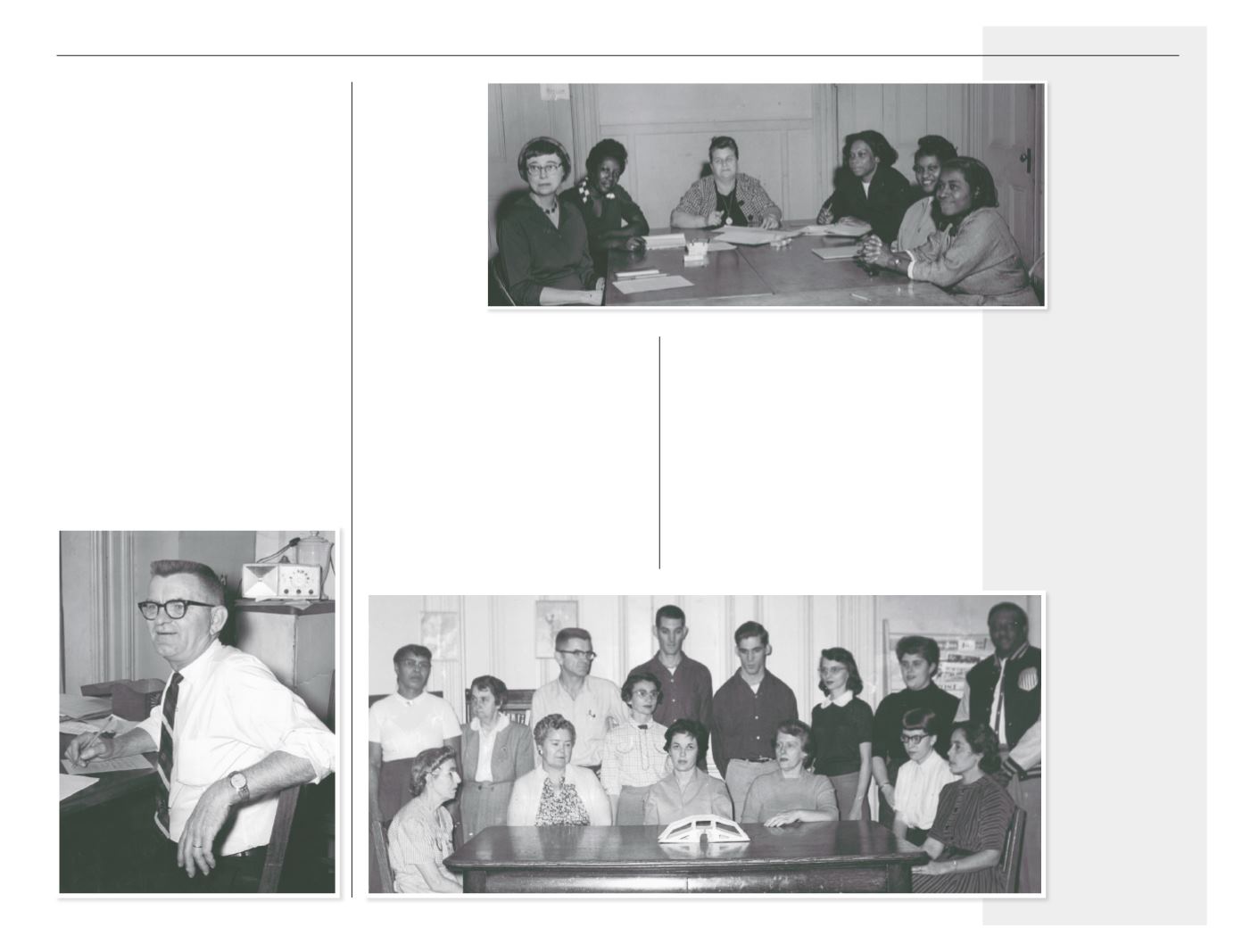

63
C
hapter
T
hree
:
‘S
uffer
the
C
hildren
…’ (1956 – 1977)
be part of the larger record spanning
twenty-plus years from 1950 until
the early 1970s. This tension was
between individuals in the early era
and became a battle to overcome
apathy of the neighborhood in the later
period. Evidence for the latter is in the
attendance record of the decades – highs
of 80 and lows of 17 members. The fault
cannot rest solely with the neighborhood
– during the years between 1953 and
1969, some nine different ministers were
appointed to the church, and the record
is rife with laments that yet another
interim pastor has been named until a
permanent person could be found. At
one extremely low point in the spring of
1960, the church closed entirely.
Arriving in the fall of 1954, Lester
Gardner, acting Executive Director,
presented
himself to
the Women’s
Board. At this
meeting, “[he]...
described his
work here
as that of a
counselor and
helper – willing
to give from
his years of
experience in
the work any wisdom he has in solving
the problems confronting the staff and
Board Members... Mr. Gardner outlined
four major problems – 1 – Church
relationships; 2 – Housing Development
– 1500 new families to contact; 3
– Physical plant needs changes; 4 –
Selection of new Executive Director.”
13
Day-to-day programs continued
as usual under the guidance of the
Women’s Board. At their May meeting,
the Board matter-of-factly discussed
current fees for the Day Care program,
whereby children receive care from
6:45 a.m. to 5:30 p.m. for $3.00 a week,
$1.00 for each extra child in the family,
plus 10 cents a week for milk. This
meeting also noted that the Personnel
Committee had been interviewing
men for the position of Director.
14
Into
this Kingdom House came Ralph and
D
F
E
P
hotos
:
D:
Executive
Director Ralph
Koeppe
E:
Training class
at Kingdom
House
F:
Ralph Koeppe
and his staff















